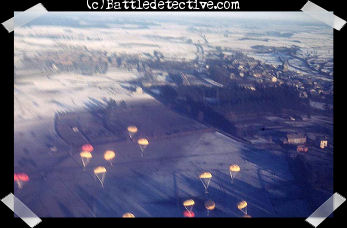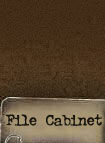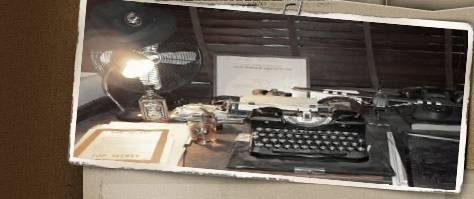|
Interpretation of the luminol
reaction
What we witnessed may have been
caused by either the presence of
just the smallest amount of blood,
hidden in the creases of the knots,
or a positive false luminol reaction
with substances other than blood.
Both options are likely. The first
option because of the location where
the parachute cloth was found,
combined with accounts of the use of
such cloth for medical purposes on
that location. The repeated
application of luminol may have
washed away the last speckles of
blood, thus ending further
recognizable reactions. The latter
option is likely because the cloth
came from under the top layer of the
Norman soil. It probably contained
micro-organisms (like fungus or
bacteria) and chemical substances (peroxidases),
present in plants. These are known
to cause a shorter luminol reaction
than the ones seen with actual
blood.
As a
result of these forensic tests, it
is now our hypothesis that although
some blood may have been on the
cloth, the pink
part was originally a piece from a
red cargo parachute.

The US Army used a color code when
dropping supplies and a red
parachute signified ammunition being
strapped beneath the canopy and
risers.
This is a color photograph taken
from one of the C-47's dropping
supplies into the besieged city of
Bastogne, Belgium.
→
This was during the Battle of the
Bulge in December 1944 and January
1945 when the 101st Airborne
Division and elements of the 10th
Armored Division defended the town
against numerical superior German
forces until relieved.
Note the colored parachute canopies.
We assume that sixty three years of
exposure made the red parachute fade
to pink. Perhaps the parachute was a
white one dyed red for just the
purpose of the color code of
dropping supplies and a low quality
dye was used.
Moreover, human blood looses its red
color after some (short) time. When
blood is exposed to air it turns
from red to brown. This is because
iron is a part of hemoglobin (which
is what is inside the red blood
cells) giving blood its red color.
When the iron comes in contact with
oxygen in the air it becomes
oxidized and turns to a brown color.
This is similar to how metals which
contain iron become rusty and change
from their original
color to a reddish-brown color.
Stains known to be from wounds
received in 1944
In the
Hartenstein Airborne Museum in
Oosterbeek, Holland,
Battledetective.com found two
examples of human bloodstains that
originated from wounds sustained in
1944.
This first stain is of the blood of
Brigadier General John 'Shan'
Hackett, commanding the 4th Brigade
of the British 1st Airborne Division
during the Battle of Arnhem. Hackett
was wounded on the 24th of September
1944 near the end of the battle. He
was kept from being taken prisoner
by the Germans and was hidden by
Dutch resistance fighters for weeks.
Hackett's widow donated many items
from that period to the Airborne
Museum. Among these items is an
undershirt which still shows a large
dark blood stain. The 63 year old
blood has turned almost black.
Also on display is a part of the
floor in the former Tafelberg Hotel.
The building was confiscated by
German Field Marshall Model in
September 1944 and during the Battle
of Arnhem served as a main dressing
station and surgical hospital. In
2003 it was partially demolished to
build an apartment complex in the
rear of the building. The
gable of the Tafelberg is still
intact and serves as the entrance to
the complex today. The floor was
also removed from the Tafelberg but
a piece of about two foot by a half
from one of the former operating
rooms was cut from it. The
piece shows blood marks from
patients (either British or German)
who were treated in the Tafelberg
Hotel in September 1944. It is
now on display in the Airborne
Museum. The blood had turned to a
dark brown color. |













